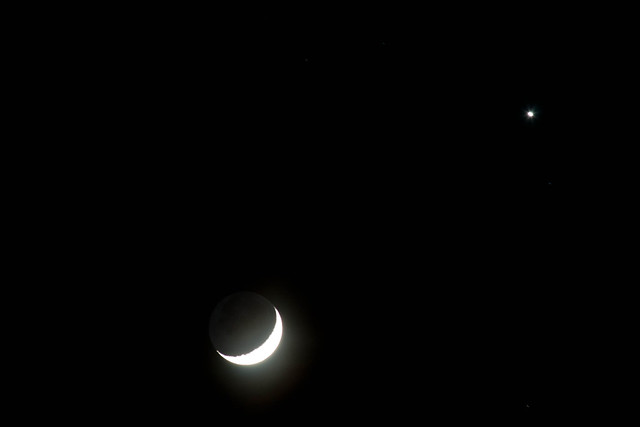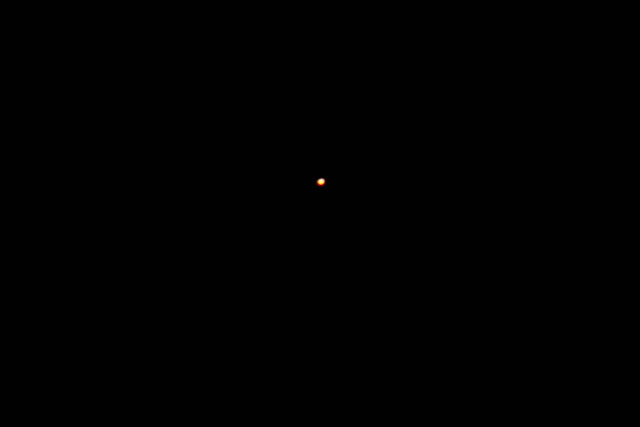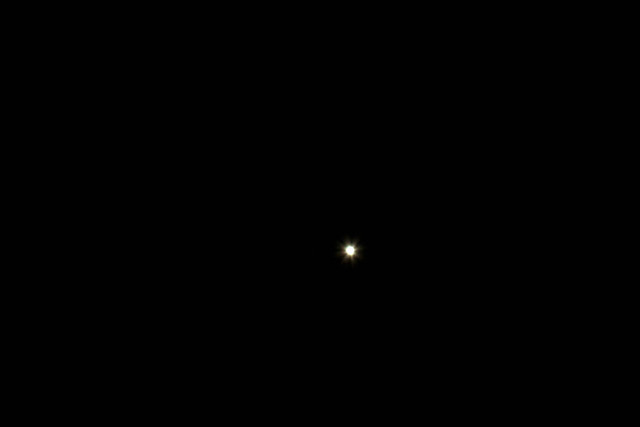and the site receives a small commission
You are using an out of date browser. It may not display this or other websites correctly.
You should upgrade or use an alternative browser.
You should upgrade or use an alternative browser.
astronmy question
- Thread starter LCPete
- Start date
- Messages
- 33
- Name
- Sean
- Edit My Images
- Yes
Venus is usually brighter than Jupiter
towershot
Points percy at the pedestal
- Messages
- 4,237
- Name
- Rick.
- Edit My Images
- Yes
Steep
Nutcrack Rapids
- Messages
- 16,633
- Name
- Hugh
- Edit My Images
- Yes
www.stellarium.org install Stellarium and the sky is the limit 
- Messages
- 416
- Edit My Images
- Yes
Its Venus, and the 'brightish' one under in (about a arms length fist distance) is jupiter (with a 300mm zoom on my 40D at 100% zoom on screen you can see it's moons!  Try it!)
Try it!)
and opposite them to the east is Saturn, and you should be able to make out the rings on a 300mm too!
and opposite them to the east is Saturn, and you should be able to make out the rings on a 300mm too!
- Messages
- 4,888
- Edit My Images
- No
...And the red one roughly over the south east of the sky is Mars.
Would be interested in seeing those saturn/jupiter pics with the 300mm.
Would be interested in seeing those saturn/jupiter pics with the 300mm.
- Messages
- 416
- Edit My Images
- Yes
Well here we go, a little Astronomy lesson for you!  lol
lol

Moon and venus by ClawzCTR, on Flickr
(Exposure 4
Aperture f/10.0
Focal Length 300 mm
ISO Speed 200)

Jupiter by ClawzCTR, on Flickr
(Exposure 0.25 sec (1/4)
Aperture f/7.1
Focal Length 300 mm
ISO Speed 200)

Venus by ClawzCTR, on Flickr
(Exposure 1
Aperture f/8.0
Focal Length 300 mm
ISO Speed 200)

Seven Sisters by ClawzCTR, on Flickr
(Exposure 1.6
Aperture f/5.6
Focal Length 300 mm
ISO Speed 200)

Saturn 100% by ClawzCTR, on Flickr

Saturn 130% by ClawzCTR, on Flickr
Same pic just bigger (130%)

Moon and venus by ClawzCTR, on Flickr
(Exposure 4
Aperture f/10.0
Focal Length 300 mm
ISO Speed 200)

Jupiter by ClawzCTR, on Flickr
(Exposure 0.25 sec (1/4)
Aperture f/7.1
Focal Length 300 mm
ISO Speed 200)

Venus by ClawzCTR, on Flickr
(Exposure 1
Aperture f/8.0
Focal Length 300 mm
ISO Speed 200)

Seven Sisters by ClawzCTR, on Flickr
(Exposure 1.6
Aperture f/5.6
Focal Length 300 mm
ISO Speed 200)

Saturn 100% by ClawzCTR, on Flickr

Saturn 130% by ClawzCTR, on Flickr
Same pic just bigger (130%)
Last edited:
- Messages
- 416
- Edit My Images
- Yes

Mars by ClawzCTR, on Flickr

Orions Nebula by ClawzCTR, on Flickr
(Exposure 2
Aperture f/5.6
Focal Length 300 mm
ISO Speed 1600)

Moon 100% Crop by ClawzCTR, on Flickr
(Exposure 0.005 sec (1/200)
Aperture f/5.6
Focal Length 300 mm
ISO Speed 800)
There you have it folks!
Last edited:
- Messages
- 4,888
- Edit My Images
- No
Orion nebula was tempting last night when I was out with the OM-10 and 100-200mm, but it's getting a bit too late in the year to see Orion in true darkness now, and since I only have the crappy tripod and b&w film loaded I decided to scrap the idea for now.
Nice photos though, especially the one where you caught earthshine in the moon. I did a similar one last night with Venus in the shot too, although I just hope my overzealous shutter speeds were ok considering I was using ISO 50 in twilight.
I see you got the rings of Saturn too, good effort
In a few weeks you'll want to look out for Venus in the seven sisters.
I presume the 4 means 4 seconds, or do you mean 1/4 of a second?
Nice photos though, especially the one where you caught earthshine in the moon. I did a similar one last night with Venus in the shot too, although I just hope my overzealous shutter speeds were ok considering I was using ISO 50 in twilight.
I see you got the rings of Saturn too, good effort

In a few weeks you'll want to look out for Venus in the seven sisters.
Moon and venus by ClawzCTR, on Flickr
(Exposure 4
Aperture f/10.0
Focal Length 300 mm
ISO Speed 200)
I presume the 4 means 4 seconds, or do you mean 1/4 of a second?
Last edited:
- Messages
- 416
- Edit My Images
- Yes
I might just do that! :d Im waiting for the moon to be in the right place to eclipse venus and have it just popping in behind and then out again, so it looks like a diamond ring. But i think thats wichfull thinking! lol
Really do need to get a telescope though with a motor mount! lol I love astro photography
(yeah it was 4 seconds, which is why its over exposed greatly, but having played a bit mastered it in the last shot of the moon)
Really do need to get a telescope though with a motor mount! lol I love astro photography
(yeah it was 4 seconds, which is why its over exposed greatly, but having played a bit mastered it in the last shot of the moon)
Last edited:
- Messages
- 4,888
- Edit My Images
- No
it is over exposed but at least you caught the moonshine! I was doing an exposure time of around that but with ISO 50 and in a sky not so dark... my shots might turn out ok then.
If we wait a month or two until the crescent of venus is more prominent you might just about catch it at 300mm. I'm considering putting a 2x telecon on my OM-10 and using the 100-200 lens to do that.
I have a 20-60 Meade monocular that I got from Costco for 40 quid, that is good enough to see the phase of Venus, the bands and moons of Jupiter and the surface of the moon... no adapter for it though!
If we wait a month or two until the crescent of venus is more prominent you might just about catch it at 300mm. I'm considering putting a 2x telecon on my OM-10 and using the 100-200 lens to do that.
I have a 20-60 Meade monocular that I got from Costco for 40 quid, that is good enough to see the phase of Venus, the bands and moons of Jupiter and the surface of the moon... no adapter for it though!
- Messages
- 416
- Edit My Images
- Yes
Cool, I think I would do much better if i had a motor mount for the tripod in order to track them, that way i could have nice long exposures and not have to have them burnt out! lol
But I think why spend 100 quid on one when a telescope will act as the 'uber' lens and have a motor mount on it!
But I think why spend 100 quid on one when a telescope will act as the 'uber' lens and have a motor mount on it!
- Messages
- 1,503
- Name
- Dale
- Edit My Images
- Yes
Well here we go, a little Astronomy lesson for you!lol
Saturn 100% by ClawzCTR, on Flickr
Saturn 130% by ClawzCTR, on Flickr
Same pic just bigger (130%)
where about's is Saturn I'd love to see if I can capture that
- Messages
- 416
- Edit My Images
- Yes
It rises in the east at about 20:57, BUT you wont be able to see it properly till about 22:00 (to allow it to get high enoughto avoid trees/horizon/street glow)
Draw a line from the moon across the sky in an arc and end in the east. Now come back up a little (at 22:00) and you will see the constelation of Virgo, and two MAYBE 4 stars will catch you eye and the form more or less a line like this -> o__o______o__o
The last two will form a upsidedown triangle with a star the similar brightness under them.
The FIRST two are the ones you want. The second star WILL be brighter than any of the four so you will know if you have the right ones! Star ONE, isn't a star... Its Saturn!
Star ONE, isn't a star... Its Saturn! 
Use you zoom lens and snap away, you will know if you have the right one as it will look like a redish elongated oval with a direction similar to this -> /. Mess about with the exposures as much as you like as it sets around 07:40 the next day!! But you wont really see it properly until you get home and shove it in PS or LR and do a close crop. (you can see in camera but results are better on the computer.) You will, due the to Earths rotation, have to move the camera and follow it as it tracks across the night sky. Oh and try manual focus if you can... AF doesn't much like dark skies and pinpricks of light...
But you wont really see it properly until you get home and shove it in PS or LR and do a close crop. (you can see in camera but results are better on the computer.) You will, due the to Earths rotation, have to move the camera and follow it as it tracks across the night sky. Oh and try manual focus if you can... AF doesn't much like dark skies and pinpricks of light... 
Hope this all helps, and good luck! (show us your efforts when you get them processed)
(show us your efforts when you get them processed) 
Clawz
Draw a line from the moon across the sky in an arc and end in the east. Now come back up a little (at 22:00) and you will see the constelation of Virgo, and two MAYBE 4 stars will catch you eye and the form more or less a line like this -> o__o______o__o
The last two will form a upsidedown triangle with a star the similar brightness under them.
The FIRST two are the ones you want. The second star WILL be brighter than any of the four so you will know if you have the right ones!
Use you zoom lens and snap away, you will know if you have the right one as it will look like a redish elongated oval with a direction similar to this -> /. Mess about with the exposures as much as you like as it sets around 07:40 the next day!!
 But you wont really see it properly until you get home and shove it in PS or LR and do a close crop. (you can see in camera but results are better on the computer.) You will, due the to Earths rotation, have to move the camera and follow it as it tracks across the night sky. Oh and try manual focus if you can... AF doesn't much like dark skies and pinpricks of light...
But you wont really see it properly until you get home and shove it in PS or LR and do a close crop. (you can see in camera but results are better on the computer.) You will, due the to Earths rotation, have to move the camera and follow it as it tracks across the night sky. Oh and try manual focus if you can... AF doesn't much like dark skies and pinpricks of light... Hope this all helps, and good luck!
Clawz
- Messages
- 1,503
- Name
- Dale
- Edit My Images
- Yes
It rises in the east at about 20:57, BUT you wont be able to see it properly till about 22:00 (to allow it to get high enoughto avoid trees/horizon/street glow)
Draw a line from the moon across the sky in an arc and end in the east. Now come back up a little (at 22:00) and you will see the constelation of Virgo, and two MAYBE 4 stars will catch you eye and the form more or less a line like this -> o__o______o__o
The last two will form a upsidedown triangle with a star the similar brightness under them.
The FIRST two are the ones you want. The second star WILL be brighter than any of the four so you will know if you have the right ones!Star ONE, isn't a star... Its Saturn!

Use you zoom lens and snap away, you will know if you have the right one as it will look like a redish elongated oval with a direction similar to this -> /. Mess about with the exposures as much as you like as it sets around 07:40 the next day!!But you wont really see it properly until you get home and shove it in PS or LR and do a close crop. (you can see in camera but results are better on the computer.) You will, due the to Earths rotation, have to move the camera and follow it as it tracks across the night sky. Oh and try manual focus if you can... AF doesn't much like dark skies and pinpricks of light...
Hope this all helps, and good luck!(show us your efforts when you get them processed)
Clawz
Thanks for the info unfortunately I can see north south and west from where I am but not east. Seems like I might have to make an effort and go somewhere with a clearer view. I'm off to Kielder Observatory in Northumberland in a few weeks time. Apparently the sky is meant to be really dark there (Milky Way class, Darkest site in Europe that has an observatory) so if the clouds keep away I might be able to have a go there.
- Messages
- 6,257
- Name
- Steve
- Edit My Images
- No
Cool, I think I would do much better if i had a motor mount for the tripod in order to track them, that way i could have nice long exposures and not have to have them burnt out! lol
But I think why spend 100 quid on one when a telescope will act as the 'uber' lens and have a motor mount on it!
Why would you want long exposures for planets?

- Messages
- 6,257
- Name
- Steve
- Edit My Images
- No
You have a small shutter and long exposure to expose it sharply and correctly. Without the mount you would get a blur as it tracks across the sky.
Ah! .... Thanks for the reply

